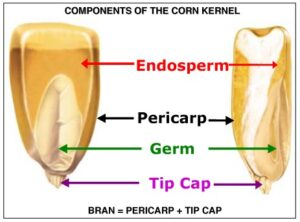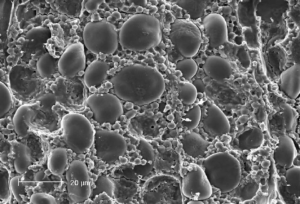
By: Dr. Gene P. Gengelbach, Ph.D., P.A.S
Commodity prices have been on a wild ride so far in 2021. Besides all of the chaos that COVID-19 has thrown at us, other factors such as record grain exports, uncertain ethanol markets, and serious weather events (both drought and flooding) have led to dramatic increases in grain and feed prices this year. Since feed costs make up well over half the cost of both dairy and beef production, this has put livestock producers in a serious financial squeeze. How can producers hope to weather this economic storm?
At the risk of oversimplifying the issue, there are several possible strategies for saving money on feedstuffs: increase production while feeding the same amount of feed, or buy less feed or less expensive feed while maintaining the same level of production. This means an increase in feed efficiency (feed less feed and still maintain the same level of production, or else get more production from the same amount of feed).
One novel way of increasing feed efficiency is through genetics. Residual Feed Intake (RFI) is the difference between the actual feed intake and the expected feed intake for an animal at a certain production level. For example, if a 1500- pound Holstein cow giving 90 pounds of energy corrected milk has a daily dry matter intake of 56 pounds and she was expected to eat 58 pounds, she has a RFI of -2.0. If she ended up eating 59 pounds instead, her RFI would be +1.0. Many breed registries are starting to include RFI in their selection indexes so producers can start breeding for improved feed efficiency. This will help improve efficiency in the future, but not in the short term.
How else can feed efficiency be improved? Increasing the digestibility of the diet allows the animal to get more nutrients out of a given amount of feed. One way to accomplish that is to feed enzymes that assist the rumen microbes in breaking down feedstuffs. This process provides more nutrients to the animal. Enzymes are specialized proteins that help digest specific compounds and are classified by the substrate they act upon. For example, amylases break down starch, proteases break down protein and cellulases break down cellulose.

Since corn is the major energy source in most dairy and beef diets and the price of corn has risen so dramatically in the last few months, one of the best ways to increase the livestock producer’s bottom line is to improve the digestibility of corn grain. Corn grain is a good energy source because it is high in starch (generally greater than 70% of the dry matter). The starch is contained in the endosperm which includes both the hard, yellow outer portion of the kernel and the white, floury interior of the kernel (see Figure 1). Figure 2 is a microscopic view of the vitreous, or hard outer endosperm. The large starch granules are embedded in a zein protein matrix that is high in prolamin, which is not soluble in water. This protects the starch (the energy source for the seedling) from degradation until the seed germinates.

Agri-King has taken advantage of the power of enzyme technology in the development of Zym-O-Factors®. Zym-O-Factors® contains both proteases that help break down the zein-prolamin protein matrix and amylases, which then digest the starch. This helps reduce the amount of starch passing out in the manure, especially when feeding large amounts of dry ground corn or dry or poorly-processed corn silage. In numerous field trials, milk production has increased three to five pounds per day when cows are fed Zym-O-Factors® (increased feed efficiency).
In other trials, the amount of corn fed was reduced by two pounds per head per day when Zym-O-Factors® was added to the diet and milk production was unchanged. With corn at $7.00 per bushel, that would be a $0.25 feed savings for a cost of approximately $0.04 per day or a 6.25:1 return on investment.
Another way to combat high corn prices is to switch from feeding corn to feeding less expensive grain by-products such as corn gluten feed, wheat midds, soy hulls or dried distillers grains. The problem with most of these by-products is they have higher fiber and lower energy content than corn. This lowers the energy density of the ration and, therefore, decrease animal performance (corn distillers grain is the exception since it contains high amounts of fat).
Again, enzyme technology comes to the rescue. Agri-King’s Ru-Mend® contains a combination of enzymes, direct-fed microbials and other ingredients that help to increase both the digestibility and absorption of nutrients from forages, grains and by-product feeds. This results in a significant increase in both animal performance and feed efficiency. Table 1 contains the data from 180 dairy herds that were fed Ru-Mend® for a minimum of 30 days. The average increase in energy corrected milk was 4.4 pounds per head per day, and a 6% increase in feed efficiency. With milk at $17.00/cwt, that would be a $0.75 return for an investment of around $0.115 cents per day, or a 6.5:1 return on investment. For additional starch digestibility along with the benefits of Ru-Mend®, there is Zy-Mend®, a combination of Ru-Mend® and Zym-O-Factors®. Our team can’t bring down the high cost of commodities, but our enzyme technologies can help your cows get the most out of every bite of feed. AK
